I love a miracle of multiplication! In the Bible we have various miracles of multiplication such as the flour and oil multiplication under Elijah’s ministry, the oil multiplication of Elisha, the multiplication of the loaves and fishes (the only Jesus wonder mentioned in all four Gospels) as well as turning water into wine. And then there is the Hanukkah oil miracle. . . .
The Jewish festival of Hanukkah, (also known as the Festival of Lights), begins at sunset on Tuesday, December 16, and ends at sunset on Christmas Eve, Wednesday, December 24, 2014. Hanukkah (meaning “Dedication”) is observed for eight nights and days, starting on the 25th of Kislev on the Hebrew calendar, which may occur from late November to late December on the Gregorian calendar.
Eight-branched candlesticks are Hanukkah’s main symbol while most of the year a seven-branched menorah represents Judaism. But a hanukkiyah (pronounced ha-noo-kee-yah) is a candelabrum with eight candleholders in a row and a ninth candleholder set above the others. The ninth “servant” candle that is used to light the other candles is known as the shamash. Even more authentic than Hanukkah candles are lamps that use olive oil.
The hanukkiyah commemorates a miracle of multiplication of oil during the inter-testamental period of the Bible. Jewish warriors re-captured their Temple at the time of the Maccabean Revolt in the 2nd century BCE. But to rededicate the house of YAH, they had only a day’s supply of oil. But this oil miraculously burned for eight full days.
It’s customary to set the hanukkiyah in a window for passers-by to be reminded of the miracle of the Hanukkah oil and light. It’s also customary to eat latkes, potato pancakes, in memory of the miracle of the oil (latkes are fried in oil). In Israel, the tradition is to eat sufganiot, deep-fried jelly donuts (a miracle is NOT to gain weight for these winter calories!). The traditional game of Hanukkah uses a dreidel, a four-sided top with the Hebrew letters Nun, Gimmel, Hey, Shin (the first letters of “Nes Gadol Haya Sham — A Great Miracle Happened There.” In Israel, the last letter is a Pay — for “A Great Miracle Happened Here.”)
What do miracles of multiplication teach us? Our resources are clearly inadequate to meet the demands of a hungry and spiritually needy world. The gospels instruct us to offer our limited resources and talents, trusting the God of miracles to bless and multiply them. When this happens, the Lord receives glory and is magnified!
Just as many Jewish people enjoy Christmas, many Christians are attracted to Hanukkah. After all, Hanukkah (the Feast of Dedication) is mentioned in the New Testament in John 10: 22-23,
“And it was at Jerusalem the feast of the dedication, and it was winter. And Jesus walked in the temple in Solomon’s porch.”
These verses clearly indicate that Jesus (Yeshua is his Hebrew name) wanted to be in his father’s house at the time of the memorial of the dedication, and as a Jew he would have been inspired by the miracle of Hannukah. (At this off-site link there is an excellent article written by “Hebrew4Christians” called “Let Your Light Shine” encouraging Christians to celebrate the Hanukkah holiday.)
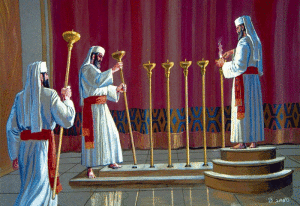 The artwork at left and the following teaching were posted this week at The Temple Institute’s Facebook page:
The artwork at left and the following teaching were posted this week at The Temple Institute’s Facebook page:
THE IRON MENORAH OF THE HASMONEANS
Upon liberating the Holy Temple from the Greeks, the Hasmonean kohanim (priests) entered the Temple Sanctuary to remove the idolatrous objects brought in by the Greeks and to purify the Sanctuary and its vessels. They discovered that the golden Menorah and the golden Incense Altar had both been stolen by the Greeks. They immediately located seven iron bars and with them fashioned a very simple but functional seven-branched Menorah. It was this Menorah that they lit using the only cruse of pure olive oil that remained in the Holy Temple.
But haven’t we learned that the Menorah needs to be made from a single piece of pure gold? And aren’t the flowers, knobs and bowls all necessary details of its design?
Halachah (Jewish law) tells us that if gold can’t be found, then another metal can be used to make the Menorah. Furthermore, the flowers, knobs and bowls are only essential if the Menorah is made out of gold. These details don’t need to be included in a Menorah made out of iron!
The Hasmoneans rightfully felt the need to renew the Temple service without delay, and therefore made do with the materials at hand. Some of our sages even suggest that they used their swords to form the seven branches! An ancient Midrash even states that the eight days of Chanukah commemorate the eight iron bars that the Hasmoneans discovered in the Holy Temple, (seven branches and one base)!
In any case, the lesson to be learned from the Hasmoneans is that the renewal of the Divine service is urgent and all proper measures should be taken in order to expedite its speedy renewal.
As time passed and conditions improved, the Hasmoneans were able to replace the iron Menorah with a silver one. Eventually the silver Menorah was itself replace by a Menorah of pure gold, in precise accordance with the description in Torah.
The following additional information is via United with Israel. . . .The menorah, a seven-branched candelabrum, is the oldest symbol of the Jewish religion, and a variation of it is used for the observance of Chanukah – the Festial of Lights.

The golden menorah at left and in the photo above, constructed by the Temple Institute, stands on display in the Old City of Jerusalem.
Hanukkah actually celebrates two miracles. First was the 2nd-century BCE victory of a small band of Jewish fighters against the powerful Syrian-Greek army. Second, upon the priests’ return to the Holy Temple to light the menorah, the tiny supply of oil sufficed for eight days, thus enabling the Jews to produce more.

The photo at left is from the Arch of Titus in Rome, depicting the Roman emperor’s triumphal procession with the treasures captured from the Holy Temple in Jerusalem.
It has not been ascertained whether or not the menorah that was taken to Rome following the destruction of the Second Temple in the year 70 AD was, in fact, the main menorah. What is definite, though, is that a menorah from the Temple did reach Rome. (King Solomon had added additional menorahs to the Temple.) “We are told in the book of Kings that King Solomon had eleven menorahs made, which stood in the sanctuary,” states Temple Institute literature. “While we only know of one Menorah which stood in the Sanctuary of the second Holy Temple, we know for a certainty that there were a number of spare Menorahs on stand-by in case the sanctuary menorah became impure or needed repair. Therefore, it is the opinion of many Torah sages that the menorah taken to Rome and depicted on the Arch of Titus was one of the spare menorahs kept in the Temple warehouse and not the active duty menorah which would have been standing in the sanctuary.”
“There are passages in the Talmud which testify that, as the Roman siege of Jerusalem sealed the fate of the city, the people of Jerusalem understood that destruction of the Holy Temple would inevitably follow. They therefore decided to place each of the sacred vessels in hiding,” according to the Temple Institute.
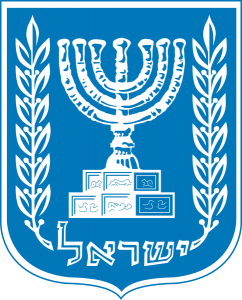
The menorah has remained the ultimate Jewish icon. The lamp standing in contemporary synagogues, known as the Ner Tamid (Hebrew for Eternal Flame), symbolizes the menorah. At left is the coat of arms of the State of Israel resembling the menorah for the Titus Arch. A large menorah greets travelers at Israel’s Ben Gurion Airport. There is also a large bronze menorah in the garden across the street from the Israeli Parliament building, the Knesset.
Click below to read more Chanukah articles:
Chanukah: It’s All About Saying ‘Thank You’
Deep Chanukah Insights
8 Videos to Light Up Your Chanukah!
The Triumph of Chanukah


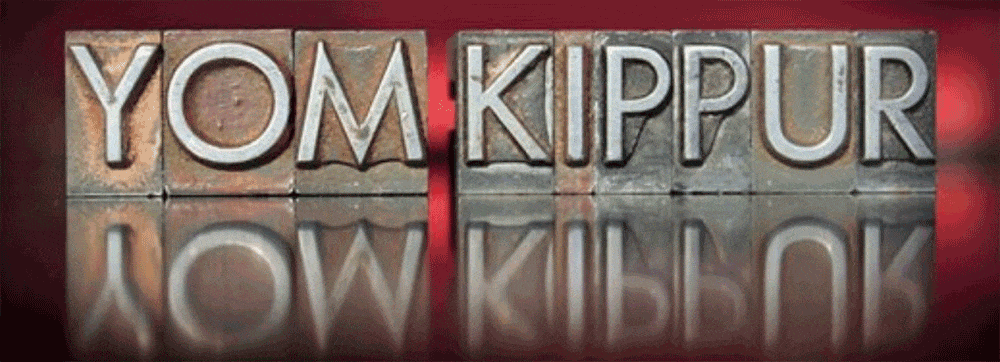

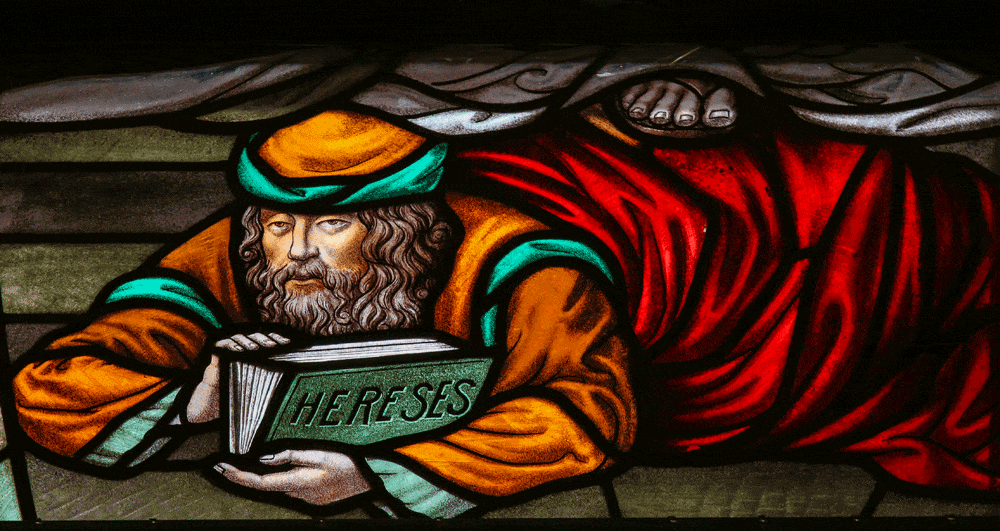
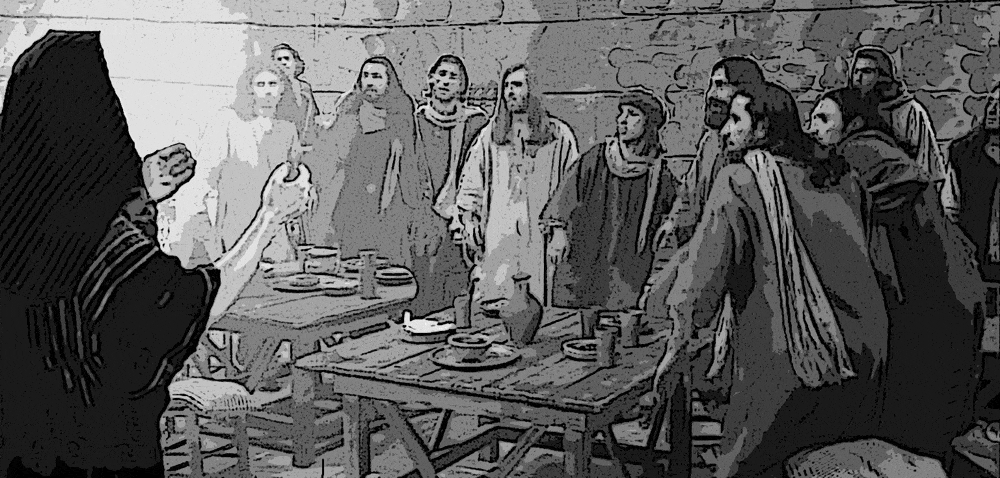
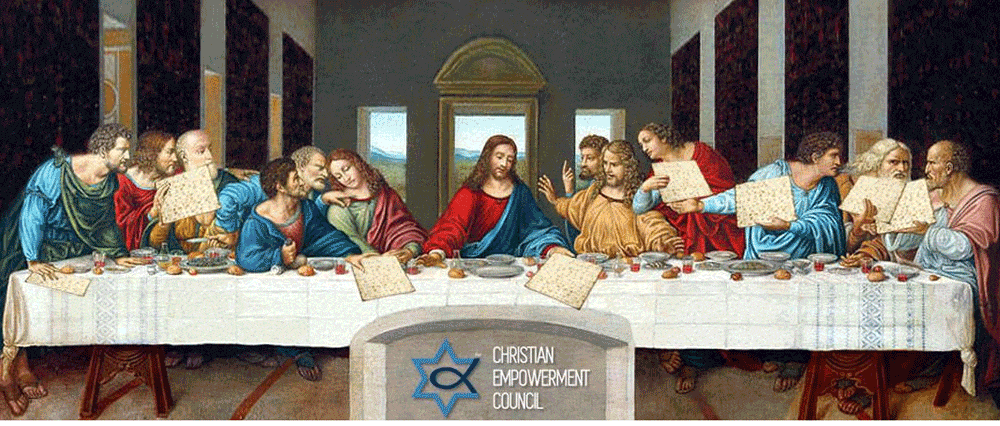
Leave A Comment